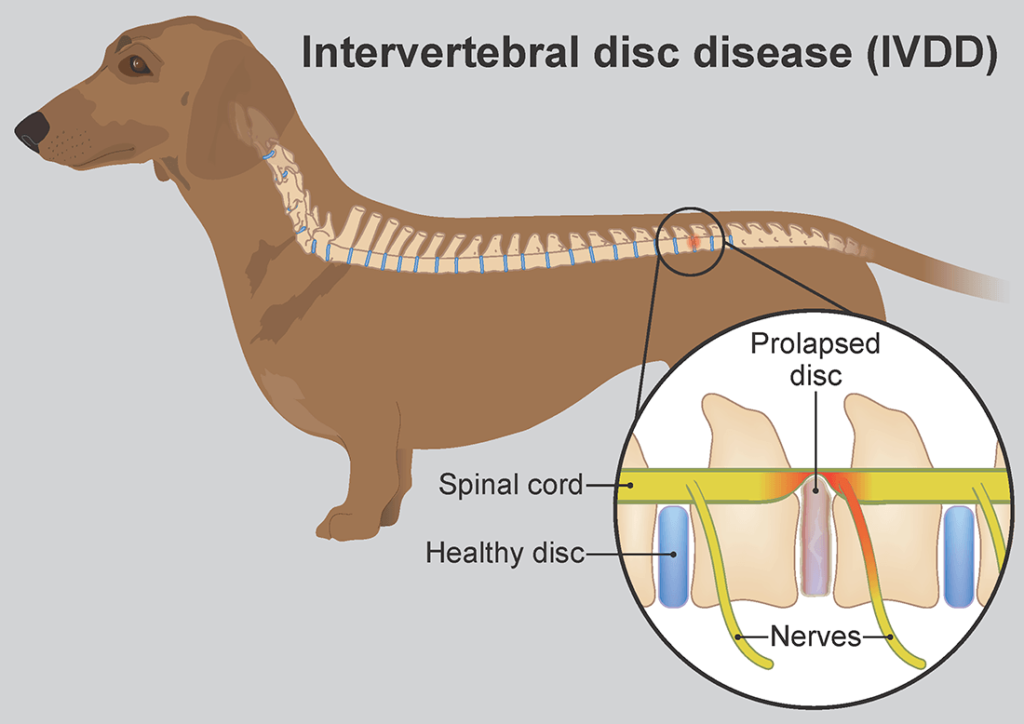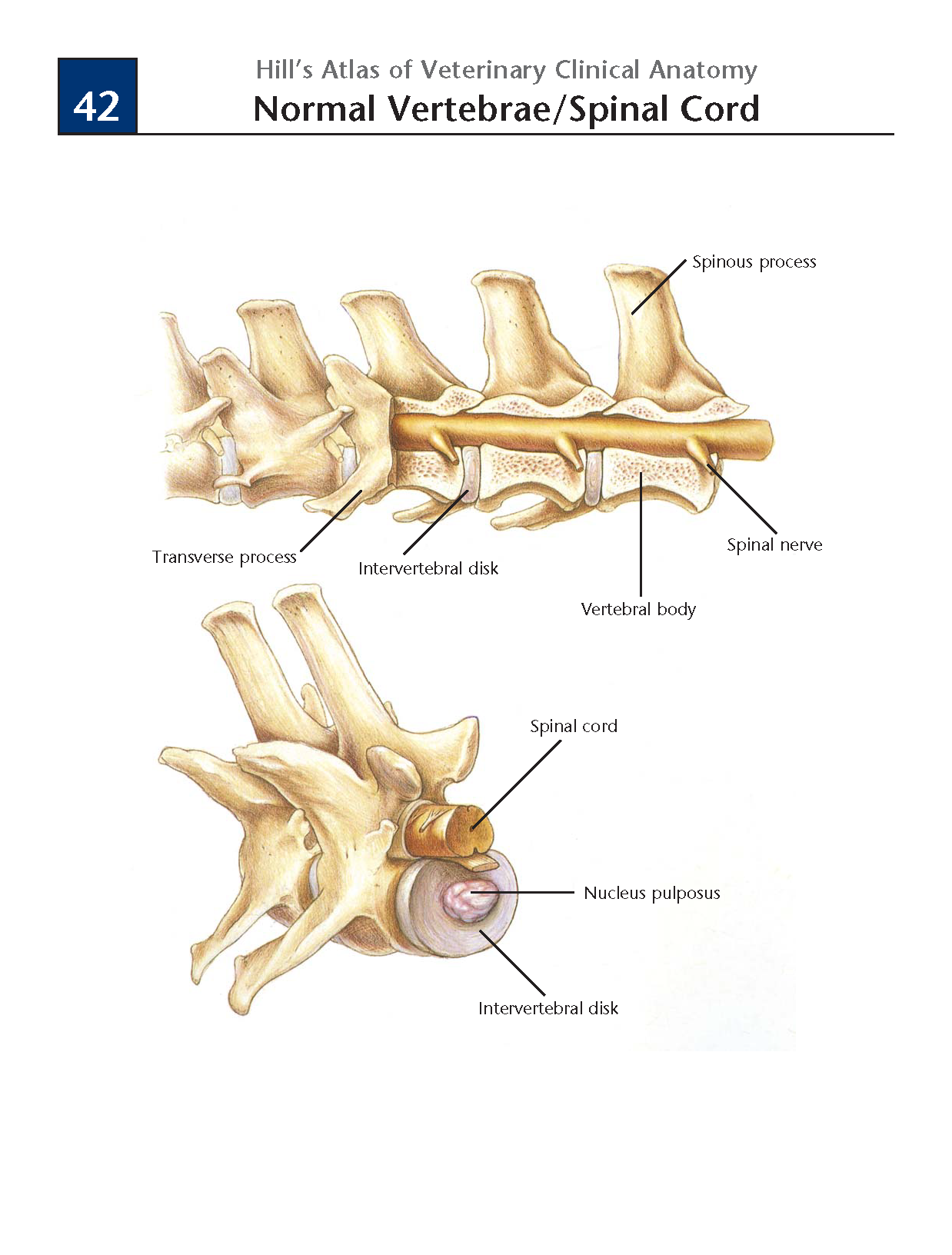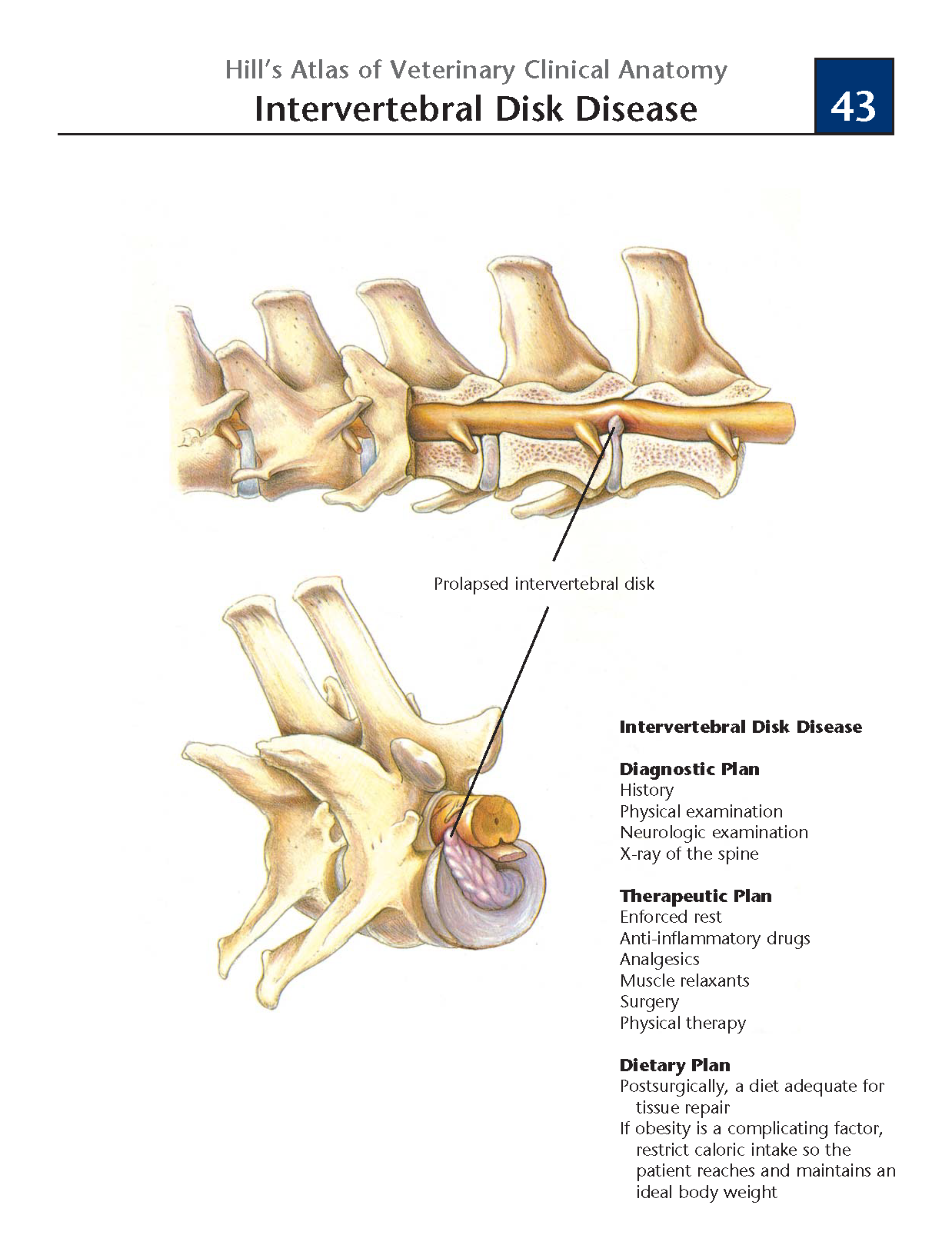The Patient
Ella, a 5 year old female spayed Dachshund, came to see me when her owner noticed that she was having trouble walking.
The Case
On examination, Ella was unable to use her rear legs normally and was walking as if she were "drunk." The medical term for this is called ataxia and points to a problem with the nerve signals from the toes to the brain. She had good range of motion in all her legs but reacted painfully when I palpated along her lumbar spine. My main concern for Ella was a disease called intervertebral disk disease (IVDD) which is very common in her breed. Dogs with long backs and short legs including the Dachshund, Corgi, and French Bulldog are at greatest risk for this disease. The backbone/spine is made up of individual bones called vertebrae which encase and protect the spinal cord and in between each bone is a squishy disk that provides cushion and allows movement of the back. There are also ligaments that run above and below the disks with the ligament above being particularly rich in sensitive nerve fibers. In dogs with IVDD, part of the disk herniates ('slips') and presses painfully upward into the sensitive ligament, the spinal cord itself, or the nerve roots. Clinical signs include acute and intense pain often with vocalization (yelping), reluctance to move, decreased sensation to the rear legs resulting in nerve deficits where dogs will drag their feet, be unable to flip their feet over and place them normally, or generalized ataxia or 'drunkenness' of the rear limbs. If the disk slips upward at an angle (lateralized), only one of the rear legs may be affected depending on where the pressure occurs. The most common place for Dachshunds to have this disease is at the mid or low back which is why only the rear limbs will be affected. It can be so severe that it can cause a complete paralysis of the hindlegs. If it happens in the neck region, dogs will have significant neck pain and reluctance to turn their head and all 4 limbs can be affected.

The first step in making the diagnosis is to take x-rays of the spine. Standard x-rays can show proper alignment of the spinal bones but we cannot "see" the disk on an x-ray due to its fluid/gelatinous nature. We can however "see" where the disk lives and if there is narrowing of the disk space or mineralization of the disk which can be an indicator of the site of the problem. We can also rule out a spinal fracture, dislocation or certain types of masses in the spine. Ella's x-rays appeared normal making IVDD even more likely.


The Treatment Plan
The next step is emergency referral to a veterinary neurologist for further imaging and potential surgery. Ella was seen that same day by our local neurology specialist who performed an MRI under general anesthesia which confirmed a disk herniation between the 13th thoracic and 1st lumbar vertebra which is at the bottom of the ribcage. She was then taken to surgery where the doctor performed a procedure called a hemilaminectomy which involves removing the right or left side of the upper part of the vertebra to access the herniated disk material which can then be carefully dissected and removed to decompress the spinal cord.
The Outcome
Obviously, this surgery is very delicate and not without risks but with the specialty training of a board certified neurologist, Ella was in good hands and made an excellent recovery. She spent one night in the hospital and was discharged the following day with instructions for strict confinement, pain medications, a sedative, and a steroid for inflammation. She began using her back legs more normally immediately following surgery and at her 2 week recheck, was nearly fully recovered. The reason this surgery needs to be performed immediately is that the longer the disk material presses on the spinal cord, the worse the prognosis as this can lead to permanent spinal cord damage. Depending on the severity of the disk disease, some pets will have a longer recovery and require intense physical therapy that can take weeks or even months to get them walking again. If you notice any signs of neck/back pain or changes in your dog's gait or ability to walk, seek veterinary care urgently.
The Drake Center for Veterinary Care is an AAHA-accredited animal hospital located in Encinitas, CA. The Drake Center loves being a source of information for all pet owners across the country however if you have any questions regarding pet care and do not live in Encinitas, CA or surrounding cities, we encourage you to contact your local veterinarian.
If you have questions and you'd like to reach out to us, you can call us directly at (760) 452-3190, or you can email us at [email protected]. Don't forget to follow us on social media Facebook, Instagram.

